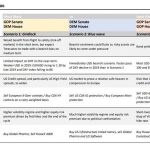
Introduction
In writing on wine and finance, I notice a lot of similarities. Most people cannot tell the difference between expensive and inexpensive wines, but the retailers use “descriptors” to convince them to buy. And while there are no investments strategies that outperform markets in the long run, those selling investment advice use their own set of descriptors to convince people there are. The similarity? Both industries have developed long lists of “BS” terms they use to get largely ignorant people to buy.
Consumer Ignorance
The marketers could not get away with selling wine and investment advice if buyers knew anything about the products. But they do not.
a. Wine
People cannot tell the difference between expensive and inexpensive wines. From tastings in Paris (1976), Princeton (2012), Stellenbosch (2013) and the Lenox Wine Club (2012-14), Lecocq and Visser,Goldstein et al, and Ashton[1], we have learned that people do not prefer expensive wines to less expensive ones: there is no correlation between price and how people rate wines. And this conclusion holds for most so-called expert tasters and well as for the “hoi polloi.” Does this mean rating differences stem from wine drinkers have different taste preferences? It could. But maybe not. Robert Hodgson has developed a test to see if tasters will rate the same wine consistently. His test involves getting the taster to drink and rate several flights of 6+ glasses of wine blindfolded where 2 or more glasses are the same wine. If tasters give significantly different ratings to the wines from the same bottle, the conclusion has to be that they simply cannot distinguish between wines. When he applied his test to judges for the California State Fair wine competition, he found that only 10 percent of the judges were consistent in their ratings. His conclusion: a wine getting one rating in a competition could get a completely different rating in another competition.
Okay. So a lot of wine drinkers are in the dark. How do wine marketers take advantage of this? A cadré of “wine experts” and retail salesmen have developed a set of terms to describe wines they rate/try to sell. Several years back, Richard Quandt wrote a seminal piece on this in which he listed 123 of the terms used by the marketers/salesmen.
Table 1. – Quandt’s BS Wine Descriptors

Source: Richard Quandt wrote a seminal piece, op. cit.
In a recent piece, I added some “BS” terms used by the Wine Spectator “experts”: “balanced”, “blueberry”, “citronella”, “honeysuckle”, “lime blossom”, “maduro tobacco”, “mango”, “marshmallow”, “papaya”, “peach”, “pear”, “pineapple”, “quinine”, “roasted caraway”, “tremendous precision”, “persistence and expression”, and “verbena”.














Leave A Comment